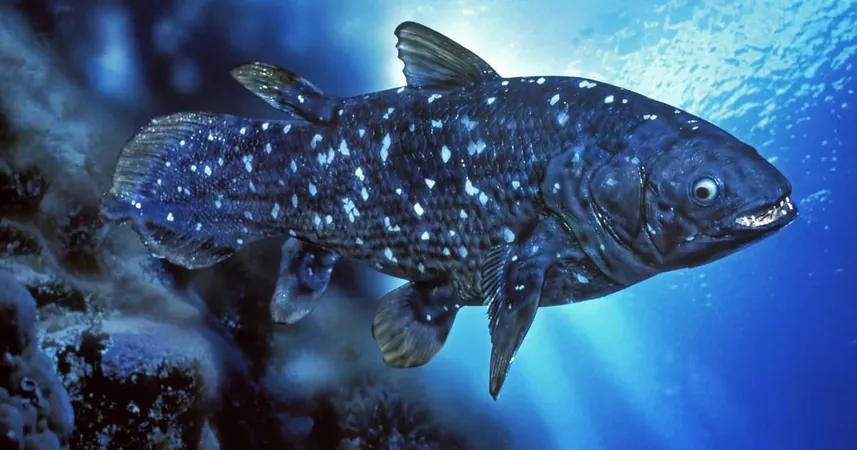
380 Million-Year-Old Giant Fish Remains Discovered in Australia: The Secrets of a ‘Living Fossil’ Revealed!
2024-11-10
Author: Li
380 Million-Year-Old Giant Fish Remains Discovered in Australia: The Secrets of a ‘Living Fossil’ Revealed!
In a groundbreaking discovery, researchers have uncovered the remains of a giant fish in Australia that dates back an astonishing 380 million years, reigniting interest in the coelacanth, famously known as a "living fossil". This ancient fish species, hailing from the age of dinosaurs, is astonishingly linked to modern lungfish and tetrapods, showcasing an evolutionary journey that has persisted through dramatic geological changes.
The outlined research, recently published in the prestigious journal Nature Communications, illustrates how these resilient creatures adapted and survived through epochs that saw massive shifts to the Earth's landmasses. Study lead author Alice Clement, an evolutionary biologist at Flinders University, expressed her surprise at the significant impact of plate tectonic movements on the evolutionary rates of coelacanths during their sprawling 400 million-year history.
Historically, coelacanths made their grand entrance around 410 million years ago but were long believed to have vanished at the end of the Cretaceous period, approximately 66 million years ago. That belief was shattered in 1938 when a fisherman in South Africa caught a living specimen, overturning previous notions of extinction and introducing the world to Latimeria chalumnae. Fast forward to recent times, researchers have identified two distinct species of coelacanth: Latimeria chalumnae and Latimeria menadoensis, with the newly discovered species, Ngamugawi wirngarri, revealed in the Kimberley region of northwestern Australia.
Clement elaborated on the significance of Ngamugawi wirngarri, stating that it represented "Australia's first great barrier reef," which once stretched hundreds of kilometers offshore. Remarkably, while the overall body shape of coelacanths has remained relatively unchanged over millions of years, researchers noted significant alterations in jaw and skull anatomy, shedding light on the complex evolutionary narrative of these fish.
Co-author Richard Cloutier, an evolutionary biologist at the University of Quebec at Rimouski, indicated that if only cranial features were analyzed, researchers would have missed identifying these creatures as 'living fossils' due to the remarkable changes observed. The team's investigative efforts further illustrated that the evolutionary pace of coelacanths has notably slowed since the Cretaceous, although noteworthy exceptions do exist.
The coelacanths are not just relics of the past; they connect us to pivotal moments in earth’s biological history. Some of their anatomical features can be traced back as far as 540 million years, a time when early fish were developing key characteristics that laid the foundation for modern vertebrates, including the emergence of jaws, teeth, paired fins, and multi-chambered hearts.
As the fascination with coelacanths continues, scientists around the globe are diving deeper into understanding how these remarkable fish managed to survive the trials of time and change. Their story serves as a compelling reminder of nature's resilience and adaptability amidst a world in perpetual flux. Stay tuned as more astonishing findings are unveiled in the continuing saga of these enigmatic creatures!

 Brasil (PT)
Brasil (PT)
 Canada (EN)
Canada (EN)
 Chile (ES)
Chile (ES)
 España (ES)
España (ES)
 France (FR)
France (FR)
 Hong Kong (EN)
Hong Kong (EN)
 Italia (IT)
Italia (IT)
 日本 (JA)
日本 (JA)
 Magyarország (HU)
Magyarország (HU)
 Norge (NO)
Norge (NO)
 Polska (PL)
Polska (PL)
 Schweiz (DE)
Schweiz (DE)
 Singapore (EN)
Singapore (EN)
 Sverige (SV)
Sverige (SV)
 Suomi (FI)
Suomi (FI)
 Türkiye (TR)
Türkiye (TR)